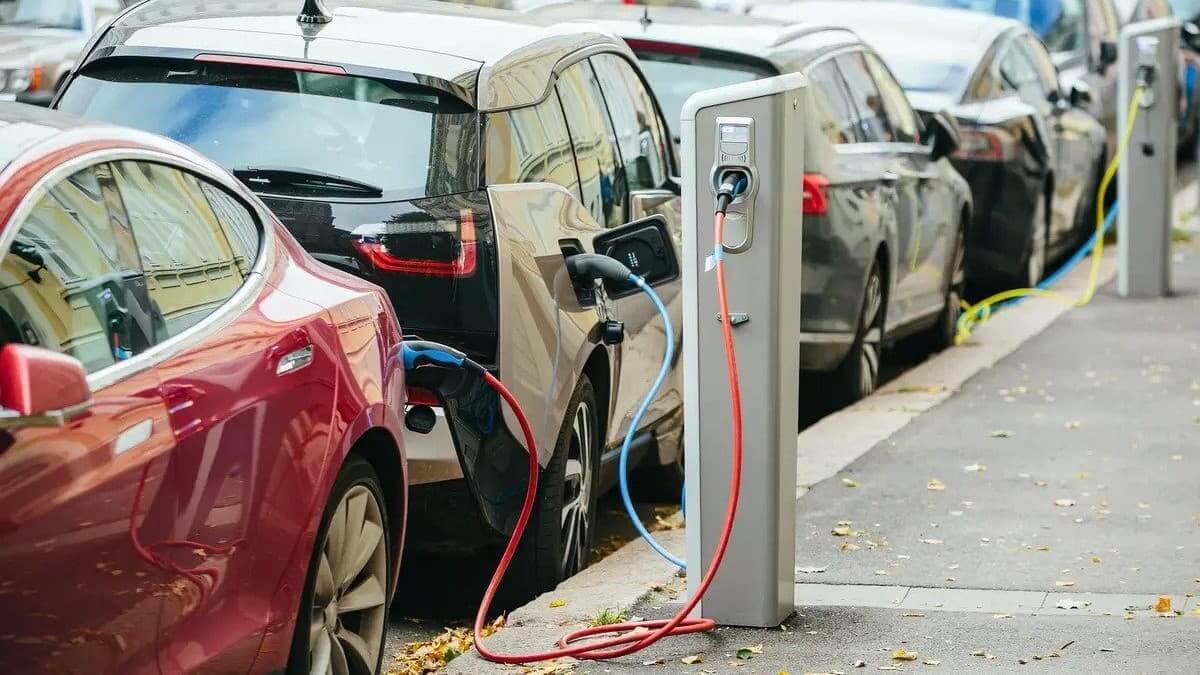EV Tax Credit 2024

Contents
The EV Tax Credit is a great way to offset some costs of driving a hybrid or electric vehicle. But there are some limitations to how much you can claim and how you can do it. Here’s some information to help you get the most out of this tax credit.
Inflation reduction act EV tax credit
The Inflation Reduction Act (IRA) of 2024 is a landmark bill that will accelerate the deployment of electric vehicles in the United States. IRA is a combination of federal and state action that creates up to 1.3 million jobs and puts the United States within reach of the Paris Agreement’s commitment to cut greenhouse gas emissions by 50 to 52 percent by 2030.
Although President Joe Biden signed the Inflation Reduction Act into law on August 16, the legislation still needs to be fully implemented. However, the Treasury Department has announced a plan to release information on the tax credit. This information includes answers to frequently asked questions and a list of vehicles that qualify for the tax credit.
The Inflation Reduction Act will apply to EVs delivered after August 16, 2024. The act has new requirements, including a condition that the vehicle is assembled in North America. Some automakers are already angry about the bill.
The new rule will also limit a buyer’s income to qualify for the EV tax credit. Buyers’ modified adjusted gross income can be, at most, $150,000.
The main electric vehicle tax credit requires the final assembly in the United States or Canada. However, the IRS says that some overseas-assembled cars could qualify for the credit.
Cars that qualify for an EV tax credit
If you’re interested in purchasing a new electric car, knowing which ones qualify for the federal tax credit is essential. The credit will reduce by half as you reach the 200,000-vehicle threshold. In addition, the government wants to encourage more affordable, mass-market EVs.
The tax credit is for plug-in hybrids and battery electric cars that meet specific requirements. This includes having battery packs rated for at least 4 kWh of energy storage. It also requires that the battery components be sourced in the United States.
The IRS has a web page that lists qualifying vehicles. You can search for a particular vehicle and see the credit amount. A quick search on the website revealed that Toyota’s Prius Prime and Kia’s Soul both qualify. Those two vehicles will be eligible for credit for several years.
There are much more new and used electric cars on the market, but they only qualify for credit. Some have a limited range. Others, like the Hyundai IONIQ, are not eligible for the new federal EV tax credit.
For the most part, the new EV tax credit will be worth less than $7,500. However, that amount is not refundable. Instead, it can be transferred to a qualified selling dealer.
Hybrid car tax rebate
A hybrid car tax rebate is a tax incentive for buying a hybrid or electric vehicle. There are many state and federal incentives available to help you get one. But before you invest in a new car, you should check your eligibility.
The Inflation Reduction Act of 2024 provides a $7,500 federal tax credit. While this is not an unbeatable amount, it is a good start. Whether you qualify or not depends on the type of electric vehicle you buy. If you’re not sure, consider consulting a qualified tax professional.
One of the best tax credits for electric cars comes from the Clean Vehicle Rebate Project. This program offers a rebate of up to $7,000 on plug-in hybrids and fuel-cell vehicles.
Besides the federal tax credit, California has a state-level rebate program for plug-in hybrids and battery electric trucks. It’s called the California Plug-in Hybrid Rebate, based on the size of your battery.
Although the Inflation Reduction Act does not specifically mention hydrogen fuel cell electric vehicles, it explicitly says them as qualifying vehicles. Those who buy a hydrogen fuel cell car can still claim a $7,500 federal tax credit.
Ev tax credit income limit
The new Inflation Reduction Act has added a $7,500 tax credit to the list of tax incentives for electric vehicles. The credit can be applied at the point of sale to reduce the purchase price of your new EV.
You must file IRS Form 8936 with your annual taxes to claim the credit. You can also transfer the credit to a qualified selling dealer at the time of sale.
The tax credit is based on the size of the battery in your vehicle. Electric vehicles with batteries of 5 kWh or less are eligible for a tax credit of up to $7,500. However, the amount of the credit is limited depending on your filing status.
You can claim the tax credit if you buy a new or used EV. Used EVs are eligible for a tax credit of up $4,000. However, you must have owned the car for at least two years. You must still use the IRS Form 8936 to claim the credit if you purchase a used EV.
In addition, you must purchase a qualifying EV assembled in the U.S. or another country with a free trade agreement with the U.S. This means the automaker will have to locate its supply chains in the United States.
Which EVS qualify for a tax credit?
There are two significant factors to consider when buying an electric vehicle. One is whether or not the car is eligible for the new federal EV tax credit. The second is whether or not it will be refundable.
There was a $7,500 tax credit for eligible EVs in the past. However, this was only applicable to new electric vehicles. Those bought for resale were not eligible. It is not necessarily the easiest to buy an EV and resell it.
After August 16, 2024, the old EV tax credit was phased out. The new credit is worth up to $7,500 and lasts nine years. Amounts vary depending on the size of the battery.
To qualify for the EC, an electric vehicle must be assembled in North America. Also, half of the battery components must be manufactured in the U.S., and the remaining 40% must be from countries with free trade agreements with the United States.
In addition, critical minerals for the car must be sourced from the United States. For example, cobalt is a component of an EV’s batteries.
Other guidelines must be met to qualify. These include the fact that the electric car must weigh less than 14,000 pounds.
How do I claim my EV tax credit for 2024?
The electric vehicle tax credit is a critical way to promote clean, renewable energy use. It is designed to spur EV sales and help to reduce greenhouse gas emissions.
To qualify for the credit, a taxpayer must purchase an eligible electric vehicle from a qualified seller and claim the credit using IRS Form 8936. This form is submitted with the tax return each year. As with any credit, the amount of the credit will depend on the type of car you buy.
Generally, the credit is worth $7,500, although the amount will vary by the size of the battery in the vehicle you are buying. For instance, a four-kWh battery will get a credit of $2,500.
A new tax deal was made that will allow the credit to be claimed at the time of purchase. This may lead to a boost in sales early next year. However, there are many requirements to meet before receiving full credit.
Before a consumer can claim their EV tax credit, they must own the vehicle, have filed a federal tax return in the last three years, and not have an adjusted gross income of more than $150,000. The credit will not be refunded if the buyer purchased the car used.
Does Chevy Bolt qualify for tax credit 2024?
If you’re interested in buying an electric vehicle, you may wonder whether the Chevy Bolt EV is eligible for the new electric vehicle tax credit. Under previous tax credit rules, the Bolt was not qualified because it was built in North America.
The Inflation Reduction Act changed federal tax credits for electric vehicles. It eliminated the 200,000-vehicle cap, which meant more manufacturers could qualify for the new tax credit. Specifically, the Inflation Reduction Act required cars to be manufactured in North America.
Unlike the outgoing tax credit, the new EV tax credit will apply to both new and used vehicles. It’s also a refundable credit, meaning you can claim it at the point of sale.
EVs purchased between August 16, 2023, and December 31, 2023, are eligible for the full $7,500 credit. As of March 20, 2024, the manufacturing caps on battery components will be lifted, and more EVs will be able to qualify.
The new tax credit includes a few changes, and some rules will only apply once regulations are finalized. Generally, the credit is limited to 30 percent of the car’s purchase price. And it’s only available to individual taxpayers.
The electric vehicle tax credit has finally been made more accessible to taxpayers with the ability to claim up to $12,500. The best part about this tax credit is that it’s fully refundable. It’s like the federal government wants to put money back into your pocket for the purchase of an electric vehicle.
The EV tax credit has been around for a while, and the latest changes didn’t alter it entirely. Some of the things about this tax credit are still the same such as the base amount. The minimum credit amount remains the same as $4,000. Additionally, there is a $3,500 for grabs if the vehicle’s battery pack has at least 40 kilowatt-hours of capacity, totaling the credit to $7,500.
As popular EV’s like Tesla vehicles have 100 kilowatt-hours of capacity in their battery packs, this refundable credit is accessible for many taxpayers.
Maximizing the EV tax credit
Here comes the part where you’ll be able to increase the EV tax credit available to you. If the producer of the EV manufactures their vehicles in the United States with a union workforce, the credit is increased by $4,500, totaling it to $12,000. Additionally, the credit is increased by another $500 if the batteries are also made in the US.
To put everything in simple terms, you get a $4,000 tax credit for the purchase of an EV. The initial $4,000 is increased by $3,500 if the battery pack includes at least 40 kilowatt-hours of capacity. This totals the credit to $7,500.
On top of this, you can get an extra $4,500 added to this tax credit if the manufacturer makes the EVs in the United States with a union workforce and an additional $500 if the batteries are US-made. This all brings the EV tax credit to $12,500.
If you’re wondering how much you would get for a Tesla, it’s up to $8,000 as Tesla is the only US car manufacturer without a unionized workforce.






Before calling for professional help, you can try a few troubleshooting steps at home. These include checking the power supply, setting and etc…